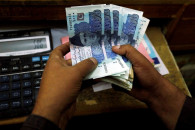Telecom sector’s financial health
Low telecom tariff has resulted in weak financials that limit growth, innovation

In the previous article, I talked about why Digital Pakistan remains a distant dream and how the dichotomy in policies governing the telecom sector, can push the country into the digital dark ages.
This article focuses on the telecom industry’s rapidly deteriorating financial health triggered by unprecedented rise in operating costs, overall macroeconomic conditions, and destruction caused by floods to critical digital infrastructure.
Pakistan has historically been a hyper-competitive telecom market with cellular mobile operators driving the country’s digital inclusion objectives by offering one of the lowest tariffs in the world. During the last five years, the average monthly data usage per customer has increased from 2 GBs to over 7 GBs, prompting a proportionate increase in capital and operational cost to serve this growth in usage.
However, the average revenue per user (ARPU), a key tool to measure the financial health of cellular mobile operators, has fallen to less than a dollar from $9 in 2003-04 with just 2G services.
The global ARPU average, on the other hand, is over $8 whereas in countries such as the US, Canada, and Bahrain it is much higher: $46, $41 and $39 respectively.
As per GSMA Intelligence, in terms of ARPU, Pakistan ranks at 267th position out of 269 telecom markets monitored globally. While low telecom tariff has been great news in terms of providing access to tens of millions of new internet uses, it has resulted in weak financials that now limit further growth and innovation in this sector.
More recently, due to unprecedented increase in operating costs primarily fuel, electricity, interest rate and local currency devaluation, the industry is now in an existential crisis.
Based on publicly available data, two cellular mobile operators reported a combined loss of around Rs50 billion during the first half of 2022. It has also been the fourth consecutive quarter that Jazz’s revenues ran into negative growth for foreign investors in US dollar terms.
There has been a sharp rise in operating expenses by around 20% as compared to last year whereas the industry revenue has not even grown in double digits. At the same time, the expectations of our customers, rightly so, are to ensure 4G throughout the country and at fast speed.
Herein lies the issue, the telecom companies are asked to pay a high spectrum fee (in comparison to the country revenue potential) and most of the investment dollars go towards government payments rather than investing in telecom equipment.
In addition, a huge concern, which has remained unaddressed, is that all spectrum auctions, and renewals and the installments to be paid on them, are priced in US dollars while the revenue generated is in Pakistani rupees. This mismatch has made it impossible to project, develop and deliver on sound business plans for 4G growth.
Denominating spectrum costs in dollar also exposes the operators to massive currency devaluation risks. For instance, three operators paid $291 million each for telecom licences in 2004-05 but the same were renewed at 55% higher price of $450 million in 2019.
In rupee terms, the increase was 360% from Rs16 billion to Rs74 billion, respectively.
Similarly, the licence this year was renewed at $486 million with 50% upfront payment and the remaining to be paid in five annual installments: infinite currency devaluation exposure adds to the uncertainty which no business plan can withstand.
Mobile operators invested around $3.5 billion during the last five years in network expansion and upgradation. During the same period, telecom sector contributed over Rs963 billion to the national exchequer in terms of income tax, customs duty, withholding and other taxes.
In addition, mobile operators also contributed around Rs45 billion to the Universal Service Fund to bridge the digital divide and to support the startup ecosystem development through Ignite.
Given the capital-intensive nature of the telecom sector, even a single point increase in interest rate translates into an additional financial burden of Rs1.5 billion for the industry and there has been eight-percentage-point increase in interest rate compared to the last year.
Rising debt and falling profits have left mobile operators exposed to liquidity risks, especially as operating conditions tighten during the ongoing economic downturn.
With the ongoing macroeconomic situation showing no sign of stability, it is projected that by 2023 the industry will cumulatively run into the red zone.
It is high time to recognise telecom as a national asset by addressing the issues threatening its survival before its capacity to further power any digital transformation gets irrevocably depleted. The industry has jointly proposed key policy reforms to the government to help mitigate the current challenges. I will share the details of the proposed industry stimulus package in my next article.
The writer is CEO of Jazz; Chairman of Mobilink Microfinance Bank; Member Board of the National Research & Development Fund (Ignite) and Chairman of the Prime Minister’s IT & Digital Economy Advisory Council’s Subcommittee on Telecom
Published in The Express Tribune, October 24th, 2022.
Like Business on Facebook, follow @TribuneBiz on Twitter to stay informed and join in the conversation.


















COMMENTS
Comments are moderated and generally will be posted if they are on-topic and not abusive.
For more information, please see our Comments FAQ